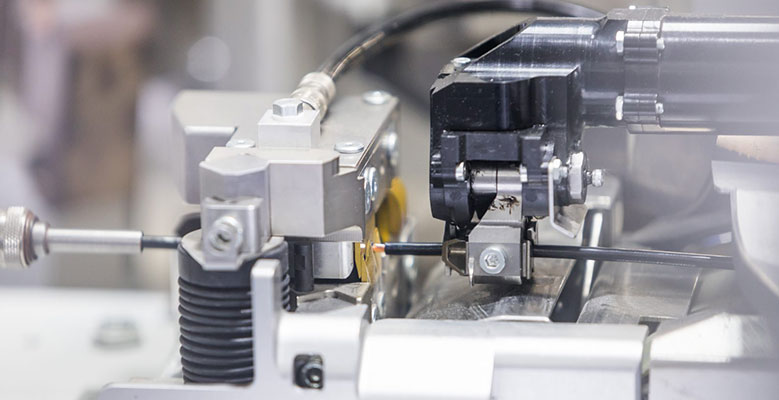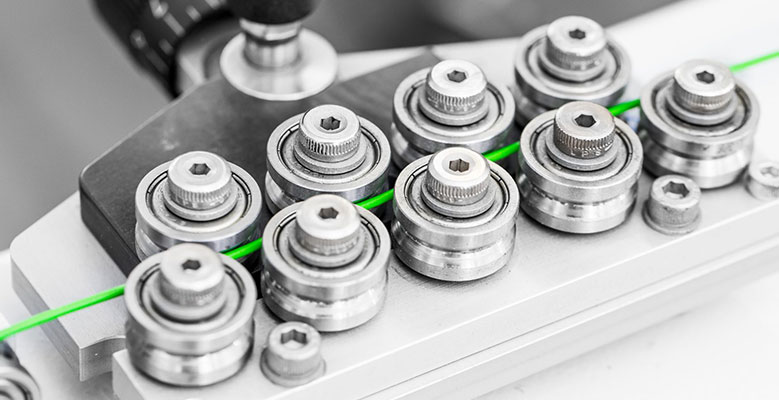
We assemble ready-to-connect cables, connectors and cable harnesses to your individual requirements. Have individual cables assembled that are high-quality, durable and highly functional!
The assembly of cables consists of a variety of processes such as stripping, terminating, connecting, crimping, plugging, insulating and protecting. All departments work closely together in-house to ensure that all sub-steps of cable assembly are optimally interlinked.
As a professional cable assembler, BÖWE-Elektrik supports customers from various sectors such as the automotive industry, aircraft construction, mechanical engineering and military technology. We gain the trust for projects with enormous demands on cable systems by producing at the highest level and complying with strict quality regulations.


Pre-assembled cables: 100% application-oriented
Whether standard solutions or individually assembled cables: BÖWE-Elektrik develops custom-fit cable systems for you that are precisely tailored to the respective requirements of your project.
Cable assembly manufacturer with expertise
We move with the times and grow together with our customers to meet new challenges. State-of-the-art technology, qualified specialists and a passion for innovative solutions have accompanied us for over 30 years.
With our fully automatic machines, we are able to cut individual wires to length and strip them according to customer requirements. It is also possible to produce crimp connections with seal, twist strands including tinning and perform ultrasonic compaction. Our portfolio also includes the marking and bundling of cables.
Our modern automatic processing machines enable us to produce any type of cable.
For example:
Cables can be cut to length, stripped, labeled and bundled as required.


With over 700 quick-change tools, we are able to reliably crimp a wide variety of contacts with and without single wire sealing in the range from 0.05mm² (AWG30) to 95mm².
Process monitoring is documented by crimp height, pull-off force, crimp force monitoring and micrographs.
We also offer solutions for various shield contacts, FFC, FPC, insulation displacement and splice processing technology.


Resistance and ultrasonic welding technology can be used to create ideal electrical connections with individual geometries for high-voltage (HV) e-mobility solutions. We are proficient in ultrasonic welding connections up to 70mm²! We are also able to produce ultrasonic compacts reliably and fully automatically.
In addition to thermoplastics, non-ferrous metals such as copper, brass and their alloys are also suitable for the ultrasonic welding process.


Using controlled soldering stations and inert gas, we solder contacts and components using solder wave technology in accordance with the relevant standards and specifications.
It is also possible to twist and tin strands on our automatic machines.
Regular calibration of the soldering stations is one of the quality-relevant measures we take to ensure soldering quality.
We supply all items in our product range in RoHS process-compliant versions. We also continue to supply leaded versions on customer request.

We can twist individual cables up to a length of 12 m with the required lay lengths on our semi-automatic and fully automatic machines. We tape, bundle, insulate and mark our cables.

Marking technology and cable labeling are becoming increasingly important across all industries. This development is evident both quantitatively and qualitatively. We are also noticing that the requirements in this sector are becoming more complex and diverse. This makes the solutions required all the more specific: BÖWE-Elektrik specializes in marking and labeling cables, housings, hoses and other components using all common methods. Do you have specific implementation requirements or would you like us to develop suitable concepts for you? As a strong partner, we can help you!
Cable marking & component labeling in a variety of processes
BÖWE-Elektrik offers a wide range of processes with which we label wires and cables or mark labels, housings and other components. We currently support you in marking technology and cable labeling as follows:


Label cables, print wires consecutively and mark components: Individual & fast
Individual customer requirements and the development of high-quality solutions are our specialty. With our expertise and state-of-the-art marking systems, we are able to mark your components. Whether marking cables, printing wires, labeling housings or more: we find targeted and needs-based solutions that are tailored to your requirements and needs. We can quickly implement changing conditions and new requirements. Do you have any questions, would you like a non-binding consultation or would you like to implement an individual project using our labeling technology? Our experts will be happy to help you!




Marking technology: Pad printing
Pad printing is a gravure printing principle that works as follows: The print image you require is etched or exposed into a plate - also known as a cliché. This creates a depression in the cliché. The applied ink flows into this. Excess ink is removed by the doctor blade. The thin ink film remains in the previously created indentation. At the same time, an elastic silicone rubber pad is pressed onto the mold to transfer the print image. The pad is then lowered onto the cable or another component, where it releases the motif. The pad is very adaptable, which is why cable marking or the printing of other complex-shaped plastics - whether concave or convex - can be optimally realized. Pad printing is one of the most important processes in marking technology. Thanks to its flexibility, the pad can adapt to any surface and shape and transfer the printed image precisely and in high quality.